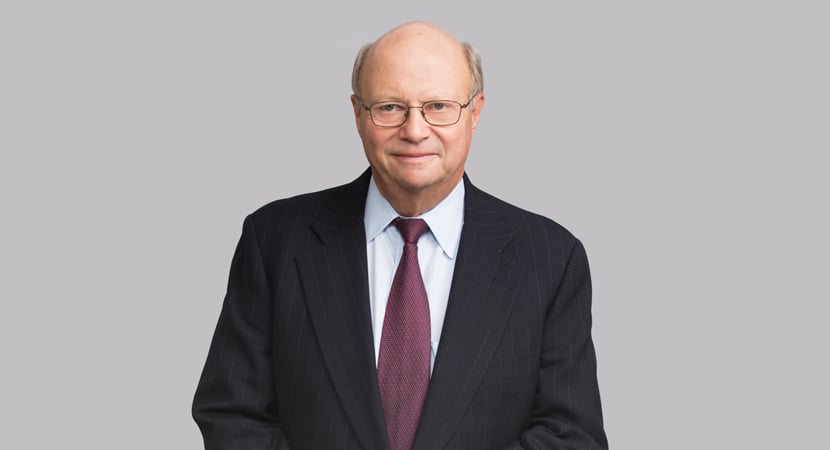District Court grants Cartoon Network’s motion to dismiss right of publicity claim brought by plaintiff, well-known figure in video-gaming community and antagonist in documentary film The King of Kong, finding that cartoon character based on plaintiff and depicting him as villainous “giant floating head from outer space” satisfied transformative use test, and that plaintiff’s claim was thus barred by First Amendment.
Plaintiff Billy Mitchell is a well-known figure in the gaming community, who, at various points since the 1980s, has held the world record for high scores in the classic arcade games “Donkey Kong” and “Pac-Man.” Mitchell is perhaps most widely known for his role as the antagonist in the documentary film The King of Kong: A Fistful of Quarters, which chronicles another gamer’s attempt to surpass Mitchell’s world record for the game Donkey Kong. “In the film, Mitchell is portrayed as successful but arrogant, beloved by fans, and at times, willing to do whatever it takes to maintain his world record,” including questioning an opponent’s equipment and the authenticity of the opponent’s submission of a filmed high score.
Mitchell sued various defendants for misappropriating his likeness for a character in The Regular Show, a comedic animated television series that airs on the Cartoon Network and revolves around the adventures of two anthropomorphic animals, a blue jay named Mordecai and a raccoon named Rigby. The character at issue, Garrett Bobby Ferguson (GBF), appears as a villain in various episodes of The Regular Show, and is depicted as a giant floating head from outer space, with long black hair and a black beard (similar to Mitchell), but with no body.
In one episode titled High Score, Mordecai and Rigby challenge GBF to play for the “universe record” in a video game called “Broken Bonez.” When Mordecai and Rigby approach the record, GBF begs them to let him win, claiming that he has devoted his entire life to the game, that he played so much that his wife left him and that the universe record is all that he has. When Mordecai and Rigby throw the game, GBF reveals that he lied to win, and that he never even had a wife. After Mordecai and Rigby ultimately prevail, the incensed GBF explodes into goo.
Defendants moved to dismiss Mitchell’s claim, acknowledging that the GBF character is “an obvious parody of [Mitchell’s] appearance in The King of Kong,” and arguing that Mitchell’s claim was barred by the First Amendment, because the GBF character satisfied the transformative use test for resolving conflicts between the right of publicity and the First Amendment. The district court agreed.
First, the court concluded that the issue of “transformativeness” was properly determined on a motion to dismiss, stating that “the only pieces of evidence needed to decide the question of misappropriation in this case are the episodes of The Regular Show featuring the GBF character and the representation of Plaintiff in the film The King of Kong,” all of which were incorporated into the complaint by reference.
Next, the court explained that the transformative use test asks whether a defendant’s use of a plaintiff’s likeness consists of “merely a copy or imitation” of the plaintiff, or whether the defendant “adds something new, with a further purpose or different character, altering the first with new expression, meaning, or message.” The court noted that, as an example of a transformative work, the Third Circuit has previously cited with approval the California Supreme Court’s 2003 decision in Winter v. DC Comics, 69 P.3d 473 (Cal. 2003), in which the musicians Johnny and Edgar Winter (who had long white hair and albino features) brought suit over two comic book characters — half-man and half-worm creatures called Johnny and Edgar Autumn, who also had long white hair and albino features. The Winter court, applying the transformative use test, rejected the Winter brothers’ right of publicity claims, finding that “although the fictional characters Johnny and Edgar Autumn are less-than-subtle evocations of Johnny and Edgar Winter, the books do not depict plaintiffs literally,” and that to the extent the Autumn brothers resemble the Winters, “they are distorted for purposes of lampoon, parody, or caricature.”
The court then noted that, in contrast, courts have found works to be nontransformative where the work involved mere copies or imitation, citing as examples the Third Circuit’s decision in Hart v. Electronic Arts, 717 F.3d 141 (3d Cir. 2013), which involved a college football video game where the user could choose to play as an avatar of a real player, and the California Court of Appeal’s decision in No Doubt v. Activision Publ’g, Inc., 122 Cal. Rptr. 3d 397 (Cal. Ct. App. 2011), which similarly found video game avatars to be nontransformative where the user could choose to play as a member of a real band.
Turning to the GBF character, the court acknowledged that the character resembles Mitchell because both have long black hair and a beard, and both have a similar backstory and other characteristics, but held that, as in Winter, “while GBF may be a less-than-subtle evocation of Plaintiff, GBF is not a literal representation of him.” The court noted various differences between Mitchell and GBF including that “GBF appears as a non-human creature, a giant floating head with no body from outer space, while Plaintiff is a human being,” “[r]ather than questioning his opponents’ honesty, GBF simply begs his opponents to let him keep his high score” and “when GBF loses his title, the character literally explodes, unlike Plaintiff.” The court also noted that Mitchell himself acknowledged that GBF was not a literal representation of him, stating in his brief that “[t]he actions of this character . . . make me look like some sort of monster, or creature, with no heart or decency. This is simply not me.”
The district court reasoned that the GBF character resembles the transformative, supernatural Autumn brothers in Winter, rather than the realistic nontransformative football player avatar in Hart. As in Winter, GBF was placed into a larger story arc which was itself quite expressive, and GBF was “an exaggerated version of Plaintiff distorted for lampoon, parody, or caricature.” By exaggerating Mitchell’s well-known traits to make the GBF character “cartoonishly evil,” the court concluded, the defendants added something new, transforming their appropriation of Mitchell’s likeness, and thus satisfying the transformative use test. Accordingly, the district court dismissed Mitchell’s claim as barred by the First Amendment.
-
 Partner
Partner -
 Partner
Partner -
 Co-Chair, Litigation
Co-Chair, Litigation -
 Chair, Intellectual Property Protection; Chair, Luxury Brands; Deputy Chair, Advanced Media and Technology
Chair, Intellectual Property Protection; Chair, Luxury Brands; Deputy Chair, Advanced Media and Technology -
 Partner
Partner -

-
 Legal Publications Editor
Legal Publications Editor
)

